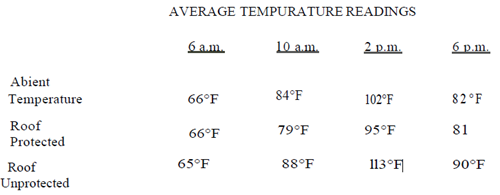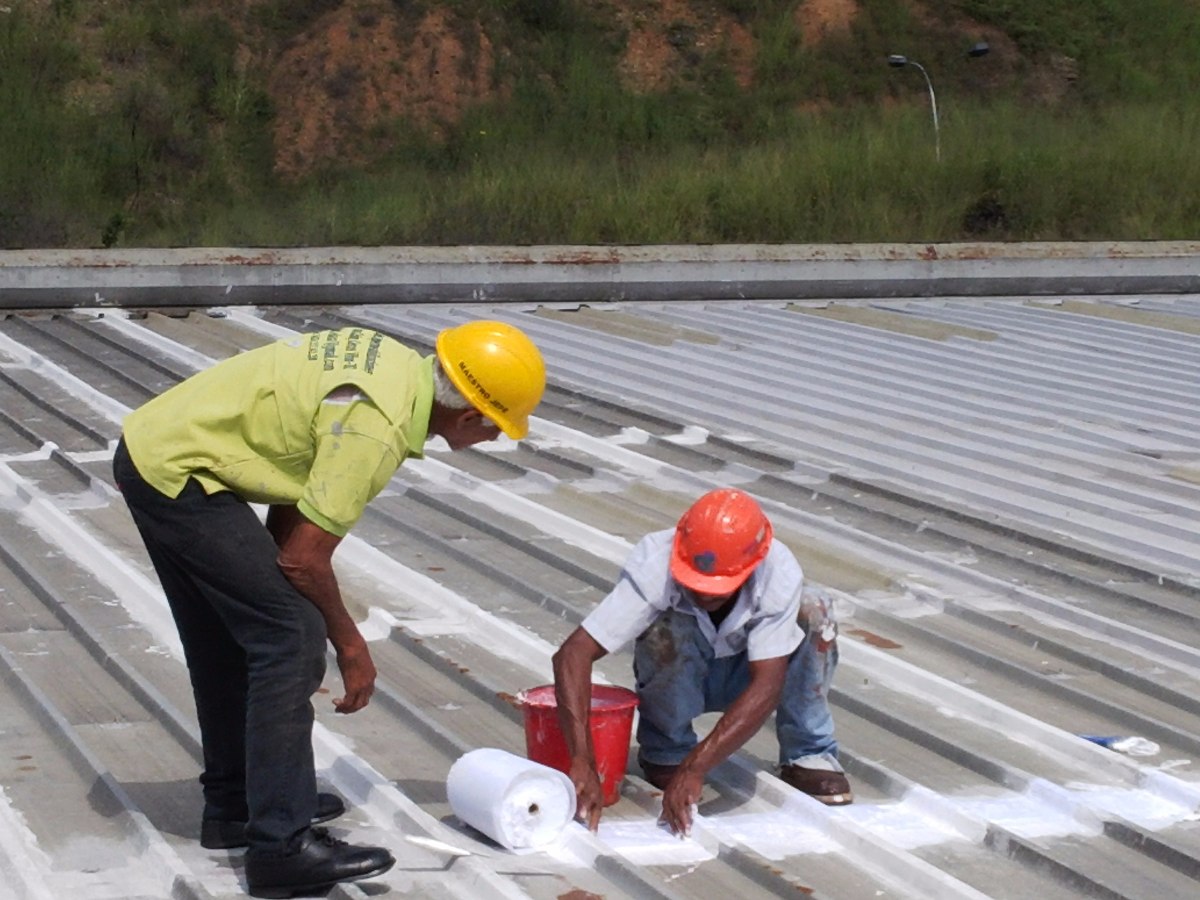The following is a resume' of a study made on a chicken farm located in the province of Veragues in the Rep. of Panama. The object of this study was to evaluate, under controlled conditions for a period of fifteen (15) days, the levels of insulation provided by the product as well as to observe the effects on the chickens (broilers), particularly on the death rate due to over-heating. The study was made by Prof. Ciro de la Victoria who is a member of the Agricultural Department of the Universidad Nacional de Panama.
BACKGROUND
The types of buildings chosen for this test were two (2) identical hen houses120' long, 30' long and 12' high at its highest point. Both buildings were oriented north-south and were good samples of the most common local design for this type of construction.
The roof was made from single sheets of galvanized zinc. The walls were made out of a netting wire and the floor was made out of hard soil covered with a layer of rice husks. Inside each hen
house three (3) industrial fans were installed but were not used during the study. One roof was painted with Ceramicoat and the other had no insulation. Usually no insulation is used by common farmers because of its high cost.
With the user of digital thermometers, Temperature readings were taken at four-hour intervals daily from 6:00 a.m. to 6:00 p.m. at a distance of 45 cms. (approx. 1.5") from the floor. Two thousand five hundred (2,500) broilers were placed in each site (a density of 1.5 chickens per sq. ft.). A veterinarian verified the causes of death to make sure only those dead from heat were included. Equal amounts of feed, drugs and water were given to both groups of animals.
After fifteen (15) days of temperature measurement the following average readings were obtained:

The number of deaths due to overheating in the hen house not painted with Ceramicoat were 45 (approx. 1.8%). The number of deaths in the hen house treated with Ceramicoat was 11 (approx.
0.44%). It was also observed that there was a significant reduction in stress levels in the animals’ place in the protected hen house.
Finally, a random evaluation of the weight of the animals showed an average difference of 12.5%, between the two groups. The group under the protected areas had a higher average weight.
CONCLUSION
• The use of Ceramicoat does provide a significant reduction in the levels of internal temperature. This reduction was even more clear as outside temperatures were higher.
• The death rate due to heat, usually at a level of 3.8% per month, was significantly reduced to less than O.5% . According to the owner of the farm, with the use of electric fans the death rate is approximately 1.78 per month.
• The improvement in the inside abient temperature positively affected the chickens' behavior and average weight.
• Even though this study does not contemplate an economical evaluation, it is-obvious that due to low cost and advantages of Ceramicoat (a water-proofing coating that is easily installed and maintained), compared to more traditional systems for cooling-off hen houses(like tean, sandwich panels, fiberglass, etc.) it is highly recommended for use on chicken farms all over the country.
I hope this report may be useful to you. If you need any additional information about it, do not hesitate to contact me. **(Note: This study was reported before the name changed to Ceramiseal)

